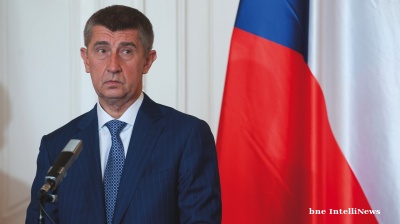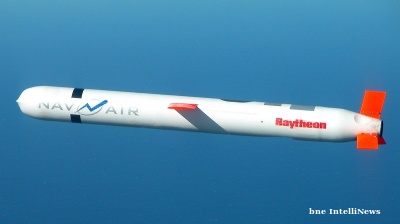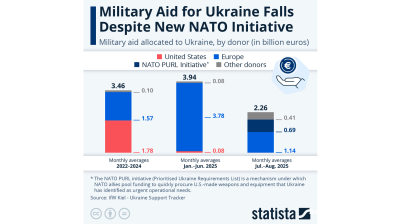The planned reforms will bring the Ukrainian electricity sector into line with EU regulations. That will allow a modernisation of the infrastructure and ultimately lower production costs. However, ownership in the Ukrainian electricity sector is highly concentrated. Without structural measures to increase competition such as privatisations, facilitation of imports but also breaking up monopolies, it is very difficult to achieve competitive market outcomes. Should this not succeed, the oligopolistic structures could lead to unduly rising electricity prices, and undermine the confidence of Ukrainians in EU rules and market instruments.
Electricity sector reform
Ukraine is planning a far-reaching reform of the electricity sector. The law, which aims to create an electricity market compliant with European rules, passed the first parliamentary reading in September. With this law, Ukraine will not only meet its obligations towards the European Energy Community, but also provide for necessary investments in the electricity sector. While currently the regulator determines the prices at which electricity producers might ask for electricity, these prices are to be determined by supply and demand in the future. The draft law essentially follows the EU electricity market design template.
However, it is questionable whether even a full implementation of the rules that were co-authored by the Energy Community can ensure a functioning electricity market. The main concern is the enormous concentration of energy-assets in a few hands.
Electricity distribution and transmission
Electricity distribution and transmission are natural monopolies, because no alternative provider can make profit by constructing a second network. Therefore, network tariffs are determined by the regulator and electricity producers are banned from controlling the operation of the networks in order to prevent them from being able to discriminate against competitors. The implementation of this unbundling provision is particularly important in Ukraine, since 40% (in terms of electricity distributed in 2015) of the regional distribution networks are controlled by DTEK, the largest private electricity producer in the country.
The concentration of the other distribution system operators in the hands of a few owners seems relatively unproblematic at first glance, as their owners do not belong to the group of the most influential Ukrainian oligarchs (Grigorishin and Babakov have controlling stakes in 10% and 21% respectively of the distribution networks, while 22% are still mainly in state ownership). However, one of the most influential Ukrainian oligarchs, Ihor Kolomoyskyi, holds minority interests in six distribution companies representing 36% of electricity distributed. In the past, well-connected oligarchs were able to influence the decisions of the regulatory authority. Whether the Law on the Independence of the Regulator, adopted in September, can prevent undue influence on network tariffs and network access in the future will have to be seen – the existing sector concentration will not make that easier.
Ukrenergo is the state-owned operator of the electricity transmission system (TSO). Due to the key position of TSOs in the modern electricity system, a professional and impartial management is tremendously important for a functioning electricity market. After the call for tender for a new director failed in October 2015, the former Deputy-Director Kovalchuk remains Acting Director.
Electricity generation
The majority of the Ukrainian electricity generation is still publicly owned. Nuclear plants, the largest hydro plants, the coal plants of Centrenergo, as well as half of the combined heat and power plant (CHP) capacities remain state-owned. DTEK is the only large private electricity generator.
With its coal, gas, CHP, hydro and wind power plants, DTEK produced 26% of the electricity in 2015. This number, however, underestimates the importance of DTEK in the Ukrainian electricity generation sector. The company owns 62% of coal-fired power capacity, which in 2015 was responsible for 74% of the coal-fired power generation. Coal-fired power plants are typically used if power plants with lower production cost (nuclear, CHP, renewables) are insufficient to meet the demand.
In such hours, there are hardly any alternatives to DTEK power plants. After the removal of price controls it would be possible for DTEK to demand very high prices in these hours (even though capacity withholding is formally prohibited in the draft law).
Only imports could significantly limit the market power of DTEK in these hours. However, in 2015 only 1.4% of the electricity was imported and those imports came from Russia. Limited imports are, on the one hand, due to technical reasons. For the foreseeable future (ie. for the next five years) Ukraine will remain in the post-Soviet synchronous area. Thus, electricity exchanges with the EU can only be performed through the so-called Burshtyn island, an area of Ukraine whose electricity system is synchronised with that of the EU, but not with the rest of the Ukrainian electricity system. As the eponymous Burshtyn power plant is controlled by DTEK, the entire electricity exchange with the West in 2015 was exclusively conducted by DTEK (exports amounting to 2.4% of Ukrainian electricity production).
On the other hand, wholesale electricity prices were usually higher in the EU than in Ukraine in the past, which made imports uneconomic. However, in 2016 electricity prices in the EU were very low for several months (€25/MWh) while DTEK coal-fired plants received an estimated €40/MWh. Thus, a better integration of Ukraine into the EU electricity market would expose DTEK to competition from EU suppliers and hence introduce a market-based cap on Ukrainian electricity prices.
Coal market
Coal power plants represent more than half of the Ukrainian power plant capacities (2015: 53%). Unlike nuclear, CHP, wind, solar and hydro power plants that run largely irrespective of demand, coal plants are switched on only when needed. This is why they are responsible for only less than one-third of production (2015: 32%). But in many hours, at least some coal power plants are required to meet the demand.
Thus we assume that with the new market model the price of electricity will be strongly driven by the price of coal. In 2015 84% of Ukrainian thermal coal was produced by mines owned by DTEK (the rest in state-owned mines). At the beginning of 2016 the energy regulator fixed the price of coal for electricity generation at a level above the global price level. Nevertheless, coal is not imported at a regular basis. This can be explained by the political importance of coal-jobs in Eastern Ukraine but also by the influence of certain oligarchs in the political system of Ukraine.
For a competitive electricity market in Ukraine, it would be important that all market participants – in particular Centrenergo – get access to thermal coal at international market prices.
Conclusion
The creation of an electricity market that is compliant with EU rules is an important signal to domestic and international investors, also beyond the electricity sector. The success of the reform strongly depends on whether Ukraine manages to create real competition in this highly concentrated sector. Beyond the narrow legal framework this requires additional steps:
1. It should be ensured that remaining privatisations foster competition in the electricity sector. In particular, the coal power plant operator Centrenergo should be sold to a strong partner, which seeks to increase the market share of Centrenergo through competitive prices and investments. In no case, Centrenergo should be allowed to come under the direct or indirect control of the largest coal power plant operator of Ukraine, DTEK.
2. The import possibilities for electricity and coal should be improved, both technically and regulatory, to increase competitive pressure on Ukrainian quasi-monopolists. In particular, energy import should be fully liberalised to allow other operators to enter into competition with the oligopolists.
3. An effective monopoly control is essential to limit the potential for discriminating consumers and competitors. The sector study on the electricity and thermal coal markets by the Antimonopoly Committee published in June 2016 was a good starting point. The next step must be to consistently prosecute the exercise of market power.
4. For the creation of real competition in the electricity generation market, it would be of great benefit to Ukrainian consumers to reduce the market power in certain segments by structural measures. This would require above all a political agreement with the corresponding quasi monopolists, which would have to agree to sell some of their assets to competitors or to exchange them for other assets.
Opinion

COMMENT: Hungary’s investment slump shows signs of bottoming, but EU tensions still cast a long shadow
Hungary’s economy has fallen behind its Central European peers in recent years, and the root of this underperformance lies in a sharp and protracted collapse in investment. But a possible change of government next year could change things.

IMF: Global economic outlook shows modest change amid policy shifts and complex forces
Dialing down uncertainty, reducing vulnerabilities, and investing in innovation can help deliver durable economic gains.

COMMENT: China’s new export controls are narrower than first appears
A closer inspection suggests that the scope of China’s new controls on rare earths is narrower than many had initially feared. But they still give officials plenty of leverage over global supply chains, according to Capital Economics.

BEYOND THE BOSPORUS: Consumed by the Donald Trump Gaza Show? You’d do well to remember the Erdogan Episode
Nature of Turkey-US relations has become transparent under an American president who doesn’t deign to care what people think.




